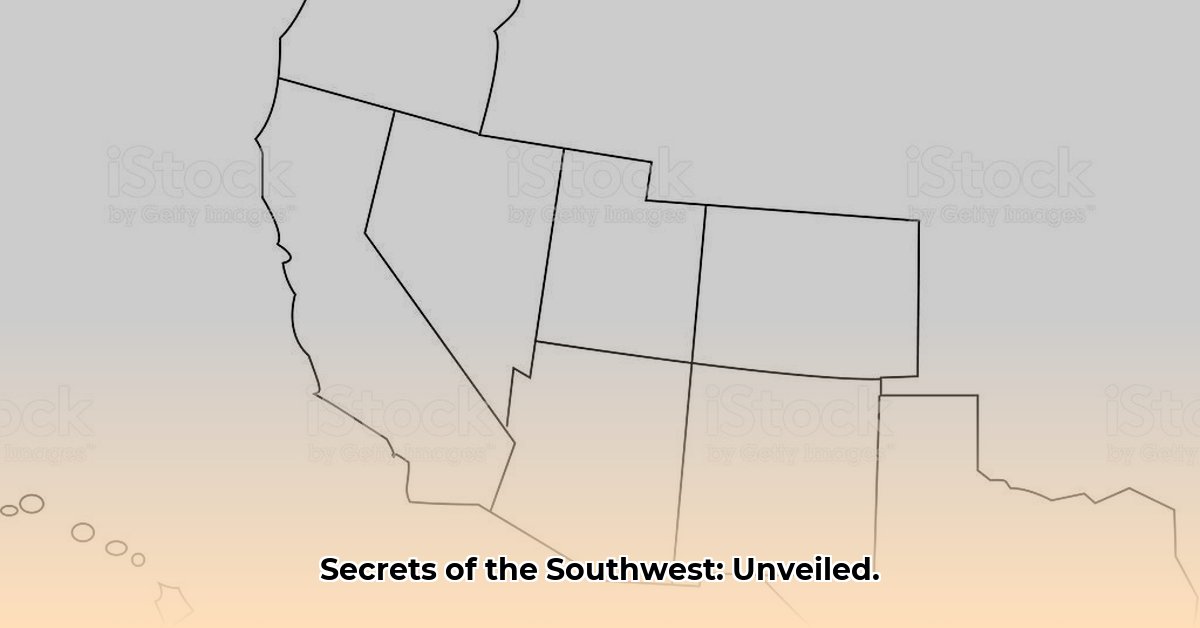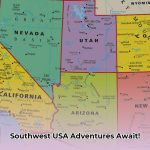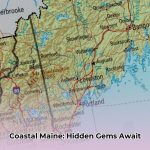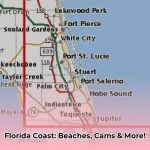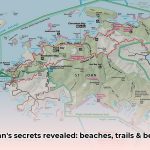Unveiling the Southwest: More Than Just a Map
The American Southwest. A land of captivating mystique, conjuring images of sun-baked deserts, towering canyons, and perhaps a lone cowboy riding off into the sunset. But defining its exact location is more elusive than pinning down a tumbleweed in a dust devil. This comprehensive guide, anchored by interactive and downloadable maps, delves into the heart of the Southwest, exploring its diverse interpretations, natural wonders, cultural heritage, and vibrant cities. Whether you’re a curious explorer or planning an unforgettable adventure, this resource will be your compass, navigating you through the captivating landscapes and rich tapestry of the Southwest United States.
Defining the Southwest: Where Exactly Is It?
Pinpointing the Southwest on a map is like trying to grasp a mirage. It’s less a fixed location and more a fluid blend of cultures, landscapes, and histories. Arizona and New Mexico form its undeniable core, but the edges blur, often encompassing parts of California, Nevada, Utah, Colorado, Texas, and even Oklahoma. This ambiguity necessitates a deeper exploration of various interpretations, considering factors beyond mere geographical boundaries.
Navigating the Southwest: States, Cities, and Landscapes
For a quick overview, this table highlights the core states and major cities typically associated with the Southwest:
| State | Capital City | Major City (Other Than Capital) |
|---|---|---|
| Arizona | Phoenix | Tucson |
| New Mexico | Santa Fe | Albuquerque |
| Utah | Salt Lake City | St. George |
| Colorado | Denver | Durango |
| Nevada | Carson City | Las Vegas |
This table provides a starting point, acknowledging that the inclusion of other cities or even entire states is often debated. The true essence of the Southwest lies in its diverse landscapes. From the vast Sonoran, Mojave, and Chihuahuan Deserts to the majestic Rocky Mountains and the awe-inspiring Grand Canyon, the region boasts a dramatic interplay of stark contrasts. This geographical diversity has played a significant role in shaping the region’s unique character, influencing everything from architecture to cuisine.
Beyond the Icons: Hidden Gems and Interactive Exploration
While iconic landmarks like the Grand Canyon draw millions, the Southwest is brimming with hidden treasures waiting to be discovered. National parks like Zion and Bryce Canyon offer breathtaking vistas and unique geological formations. Ancient ruins whisper tales of civilizations past, while quirky roadside attractions add a touch of whimsy to any journey.
Interactive maps transform exploration, allowing users to zoom, discover, and plan personalized itineraries. Downloadable/printable maps cater to offline adventures, ensuring navigation remains seamless even in remote areas with limited connectivity.
A Deeper Dive: Understanding Regional Variations
The Southwest’s ambiguous boundaries lead to diverse interpretations. Academics, locals, and even government agencies may offer varying definitions. Some broadly include portions of seven states, while others adhere to stricter geographical delineations. Understanding these nuances enriches any exploration of the region. For example, the University of Arizona offers a more precise definition based on specific coordinates, reflecting a more geographically focused perspective.
Furthermore, the term “Southwest” encompasses various sub-regions, each with distinct characteristics. The “Desert Southwest” emphasizes the arid landscapes, while the “Cultural Southwest” highlights the rich blend of Native American, Hispanic, and Anglo-American traditions. Exploring these regional variations adds depth and complexity to our understanding. For example, is El Paso, Texas, truly part of the Southwest, or is its cultural identity more aligned with West Texas? Ongoing research and evolving perspectives continually shape our understanding of the region, adding another layer of intrigue.
The Human Element: Culture and History
The Southwest’s story is etched in its human history. For millennia, Indigenous tribes like the Navajo, Hopi, and Zuni have called this land home, their cultures deeply intertwined with the environment. The arrival of Spanish colonizers in the 16th century introduced new traditions and architectural styles, evident in cities like Santa Fe. Later, Anglo-American settlers added another layer to this cultural tapestry, creating a complex and fascinating mix of influences.
Historical maps provide a window into the past, tracing the routes of explorers, the growth of settlements, and the shifting boundaries of the region. Comparing historical maps with contemporary ones reveals the impact of human activity, from the development of railroads to the establishment of national parks. This ongoing interplay between humans and the environment continues to shape the Southwest today.
Facing the Future: Modern Challenges
The Southwest faces contemporary challenges, particularly regarding climate change and water resource management. Rising temperatures, prolonged droughts, and increasing populations strain the region’s delicate ecosystems and water supplies. These challenges necessitate innovative solutions and sustainable practices to ensure the long-term health and prosperity of the Southwest. Researchers and policymakers are actively working to address these issues, but the future remains uncertain, highlighting the importance of ongoing research and community engagement.
Practical Tips for Exploring the Southwest
Planning a trip to the Southwest? Consider these essential factors:
- Timing: Summers can be scorching, while winters can be surprisingly cold, particularly at higher elevations. Research the best time to visit based on your desired activities and tolerance for extreme temperatures.
- Transportation: A road trip offers maximum flexibility, while flying into a major city allows you to focus on a specific area. Consider your budget and preferred travel style.
- Accommodation: Options range from luxurious resorts to rustic campsites. Choose accommodations that align with your preferences and budget.
| Region | Weather | Suggested activities |
|---|---|---|
| Desert Regions | Hot, dry summers; mild winters | Hiking, camping, stargazing |
| Mountain Regions | Cooler summers; snowy winters | Hiking, skiing, scenic drives |
Remember to pack layers, stay hydrated, and respect the delicate desert environment.
Key Landmarks and Cities: A Visual Journey
| Feature | Description |
|---|---|
| Grand Canyon | Immense canyon carved by the Colorado River, a testament to the power of erosion. |
| Mesa Verde | Ancient cliff dwellings providing insights into the lives of the Ancestral Puebloans. |
| Zion National Park | Stunning canyon with towering sandstone cliffs, a hiker’s paradise. |
| Monument Valley | Iconic desert landscape with towering buttes and mesas, a frequent backdrop in Western films. |
| Phoenix | Arizona’s capital, a sprawling metropolis offering modern amenities amidst the desert. |
| Las Vegas | Nevada’s entertainment capital, renowned for its vibrant nightlife and dazzling shows. |
| Albuquerque | New Mexico’s largest city, a cultural hub blending Native American, Spanish, and Mexican influences. |
| Santa Fe | New Mexico’s capital, an art lover’s haven with unique architecture and a thriving creative scene. |
| Tucson | A city in southern Arizona offering a laid-back atmosphere and proximity to the Sonoran Desert. |
This guide is designed to be a dynamic resource, evolving alongside our understanding of the Southwest. Ongoing research and discoveries continually enrich our knowledge of this captivating region. Embrace the spirit of exploration, remain curious, and allow the Southwest to unveil its wonders.
- Water Mill Electricity Generator Provides Free Home Power - December 16, 2025
- Water Wheel Electric Generator Provides Free Home Electricity - December 15, 2025
- Choosing the Right Portable Hydro Turbine for Your Needs - December 14, 2025
